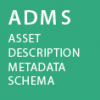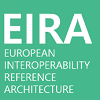Recommendation 33 | Interoperability layer: Technical interoperability
Use open specifications, where available, to ensure technical interoperability when establishing European public services.
Solutions
| List of all available solutions that implement this recommendation |
|---|

|
ADMS is an open source solution. |

|
The CAMSS ontology is based on open specifications. |

|
The CEF Big Data Test Infrastructure is based on open specifications and standards. |

|
CIRCABC uses open specifications which can be reused by public administrations in an effort to allow for technical interoperability. The underlying system is Alfresco and CIRCABC offers different interfaces in order to integrate, exchange documents and information with other tools. Those interfaces can be consumed via standard protocols such as REST API, CMIS, WebDAV. |

|
The CISE node is based on open specifications. |

|
The Context Broker building block is fully compliant with and provide reference implementations of the Context Information Management API standard set by the European Telecommunications Standards Institute (ETSI). |

|
The CAV is based on open specifications. |

|
CPSV-AP is based on open specifications. |

|
The CSSV is based on open specifications. |

|
Crypto Tool is an open source tool. Hence, by using it, public officials are giving preference to the use of open specifications. |

|
CISE is based on open specifications. |

|
eArchiving promotes the use of open source software, as the main standard for digital archiving is the Reference Model for an Open Archival Information System (OAIS). |

|
The eDelivery building block provides an open specification for data exchange capabilities using AS4 exchange protocol. |

|
The CEF eID building block is based on open specifications and standards. |

|
The CEF eInvoicing building block is based on open specifications and standards. |

|
EIRA facilitates the identification of interoperability specifications and promotes the use of common interoperability specifications based on open standards referenced in the European Interoperability Cartography. |

|
The library contains (open) specifications, hence encouraging the use of open specifications at national, sub-national and local levels. |

|
ELI gives preference to open standards by building on standard semantic web technologies (RDF, OWL) and vocabularies (FRBR, SKOS, Dublin Core). |

|
XML is one of the serialisation of ELI, as RDFA, JSON and it allows to serialise ELI metadata using XML instead of the recommended semantic web standard (RDF). |

|
The CEF eSignature building block is based on open specifications and standards. |

|
ESPD exchange data model ensures technical interoperability by using open specifications. |

|
The CEF eTranslation building block is based on open specifications and standards. |

|
eTrustEx allows for technical interoperability, as it is an open source software. |

Location Framework Blueprint
|
Recommendation 12 of the EULF Blueprint recommends the use of open standards where possible. |

|
Question B9 of the Service Delivery section of the IMAPS questionnaire assesses to which extent public services are based on existing open semantic standards and specifications. Furthermore, Question B6 of the Service Management section assesses to which extent specifications are open. |

|
The INSPIRE reference validator is based on open specifications, its source code is available on GitHub. |

|
The LEOS software is open source and hence by using public officials are using open specifications. |

|
Ref2link proactively supports the dissemination of ELI and ECLI standards at EU and national levels. |

|
The ESS Statistical Enterprise Architecture includes open specification in order to promote technical interoperability across Europe. |

|
The EUPL is an open source software license, hence facilitating the use of open specifications for development and delivery of digital public services. |

|
The Sharing and Reuse Framework recommends the use of open specifications when procuring IT solutions. It further details the key benefits of following such an approach. |

TIMAPS v1.0.0 |
TIMAPS assesses the behavioural aspects of a digital public service, from the technical interoperability viewpoint. Question D2 of the Service Delivery section of the TIMAPS questionnaire assesses if specific technical means are used by a digital public service for the delivery of data, information and knowledge to its end-users or between the information systems of the public service. |



